Journal Description
Healthcare
Healthcare
is an international, scientific, peer-reviewed, open access journal on health care systems, industry, technology, policy, and regulation, and is published semimonthly online by MDPI. European Medical Association (EMA) and Ocular Wellness & Nutrition Society (OWNS) are affiliated with Healthcare and their members receive discounts on the article processing charges.
- Open Access— free for readers, with article processing charges (APC) paid by authors or their institutions.
- High Visibility: indexed within Scopus, SCIE and SSCI (Web of Science), PubMed, PMC, and other databases.
- Journal Rank: JCR - Q2 (Health Policy and Services) / CiteScore - Q1 (Leadership and Management)
- Rapid Publication: manuscripts are peer-reviewed and a first decision is provided to authors approximately 21.5 days after submission; acceptance to publication is undertaken in 2.6 days (median values for papers published in this journal in the first half of 2025).
- Recognition of Reviewers: reviewers who provide timely, thorough peer-review reports receive vouchers entitling them to a discount on the APC of their next publication in any MDPI journal, in appreciation of the work done.
- Companion journals for Healthcare include: Trauma Care and European Burn Journal.
Impact Factor:
2.7 (2024);
5-Year Impact Factor:
2.8 (2024)
Latest Articles
Does Exercise Performance Differ Among Male Law Enforcement Officers Based on Their Body Mass Index Category?
Healthcare 2025, 13(13), 1584; https://doi.org/10.3390/healthcare13131584 (registering DOI) - 2 Jul 2025
Abstract
Objectives: To assess differences in exercise performance among law enforcement officers (LEOs) based on body mass index (BMI). Methods: Five hundred and thirty-two male LEOs (n = 532; age 38.9 ± 7.4 yrs; height: 180.1 ± 6.9 cm; body mass: 92.1 ±
[...] Read more.
Objectives: To assess differences in exercise performance among law enforcement officers (LEOs) based on body mass index (BMI). Methods: Five hundred and thirty-two male LEOs (n = 532; age 38.9 ± 7.4 yrs; height: 180.1 ± 6.9 cm; body mass: 92.1 ± 15.1 kg) were analyzed. The LEOs were stratified into three BMI groups: “healthy” (18.5–24.9 kg/m2), “overweight” (25.0–29.9 kg/m2), and “obese” (≥30.0 kg/m2). Tests for push-ups, sit-ups, estimated VO2max, vertical jump (VJ), and peak anaerobic power output (PAPw) were conducted. Non-parametric Kruskal–Wallis H and Quade’s rank-based ANCOVA with age as a covariate test were used to evaluate differences in exercise performance between BMI groups. Mann–Whitney U tests with Bonferroni post hoc corrections were used for pairwise comparisons. Effect sizes were calculated as rank eta squared (ηH2) for the Kruskal–Wallis H test results. Results: Differences were noted across BMI groups for the push-ups (p < 0.001, ηH2 = 0.101), sit-ups (p < 0.001, ηH2 = 0.187), VO2max (p < 0.001, ηH2 = 0.145), VJ (p < 0.001, ηH2 = 0.137), and PAPw (p < 0.001, ηH2 = 0.504). The pairwise comparisons revealed differences between each group, with the obese and overweight groups exhibiting a lower VJ, VO2max, and performance in push-ups and sit-ups while having a higher PAPw than the healthy group, even after adjusting for age. Conclusions: These data demonstrate that a higher BMI is associated with poorer exercise performance, except for PAPw, and highlight the importance of maintaining a healthy BMI in LEOs.
Full article
(This article belongs to the Special Issue Health and Readiness of Tactical Populations)
►
Show Figures
Open AccessArticle
Assessment of Caregiver Burden and Burnout in Pediatric Palliative Care: A Path Toward Improving Children’s Well-Being
by
Sefika Aldas, Murat Ersoy, Mehtap Durukan Tosun, Berfin Ozgokce Ozmen, Ali Tunc and Sanliay Sahin
Healthcare 2025, 13(13), 1583; https://doi.org/10.3390/healthcare13131583 (registering DOI) - 2 Jul 2025
Abstract
Pediatric palliative care (PPC) is an evolving field that focuses on supporting children with life-limiting conditions, where the quality of care is vital. This study is a retrospective observational investigation that examines the experiences of caregivers to inform health and social service planning
[...] Read more.
Pediatric palliative care (PPC) is an evolving field that focuses on supporting children with life-limiting conditions, where the quality of care is vital. This study is a retrospective observational investigation that examines the experiences of caregivers to inform health and social service planning and enhance PPC quality. Methods: Data of pediatric patients aged 3 months to 18 years admitted to a PPC inpatient unit over two years were retrospectively reviewed. Sociodemographic characteristics of primary caregivers, including age, gender, number of siblings, education, income, occupation, and marital status, were recorded. Caregiver burden and burnout were assessed using the Zarit Burden Interview and the Maslach Burnout Inventory, respectively. Associations between caregiver characteristics and these measures were analyzed. Results: A total of 118 patients and caregivers were evaluated; 54.2% of patients were male. The most common diagnoses were neurological diseases (44.9%), followed by syndromic–genetic disorders (28.8%). About 34% of patients required more than three medical devices. Most caregivers were female (91.5%), mainly mothers and 53% had only primary education. No significant differences in care burden or burnout were found based on caregiver gender, marital status, or child’s diagnosis. However, the use of nasogastric tubes and multiple medical devices was associated with higher burnout. Lower income was significantly linked to higher care burden, while longer caregiving duration correlated with both increased burden and burnout. A moderate positive correlation was found between Zarit and Maslach scores. Conclusions: The complexity of PPC patients’ care increases caregiver burden and burnout. Expanding specialized PPC services is crucial to support caregivers and sustain home-based care.
Full article
(This article belongs to the Special Issue Health Promotion to Improve Health Outcomes and Health Quality)
Open AccessArticle
Factors Influencing Psychological Distress in Caregivers of People with Dementia
by
Nantiya Umpimai, Sopin Sangon and Patcharin Nintachan
Healthcare 2025, 13(13), 1582; https://doi.org/10.3390/healthcare13131582 - 2 Jul 2025
Abstract
►▼
Show Figures
Background/Objectives: This predictive research aimed to examine the influences of gender, perceived patients’ ability to perform activities of daily living, perceived impact of behavioral and psychological symptoms of dementia (BPSD), perceived caregiver burden, and perceived social support on the psychological distress of family
[...] Read more.
Background/Objectives: This predictive research aimed to examine the influences of gender, perceived patients’ ability to perform activities of daily living, perceived impact of behavioral and psychological symptoms of dementia (BPSD), perceived caregiver burden, and perceived social support on the psychological distress of family caregivers of persons with dementia. Methods: The sample consists of 172 family caregivers of persons with dementia who received services at the outpatient department of a hospital in Bangkok and met the inclusion criteria. The research tools used in this study included a demographic questionnaire, the Kessler Psychological Distress Scale, the Barthel Activities of Daily Living Index, a Thai tool for assessing behavioral and psychological symptoms of dementia, the Thai Burden Interview for Caregivers of Patients with Chronic Illness, and Social Support Scale. The data were analyzed using descriptive statistics and multiple regression analysis. Results: The research findings revealed that 26.2% of the sample experienced psychological distress. Multiple regression analysis indicated that gender, perceived patients’ ability to perform activities of daily living, perceived impact of BPSD, perceived caregiver burden, and perceived social support could jointly explain 66.3% of the variance of psychological stress of family caregivers of persons with dementia (R2 = 0.663, F = 65.303, p < 0.001). The factors that significantly influenced psychological distress in family caregivers of dementia were perceived caregiver burden (β = 0.693, p < 0.001) and perceived impact of BPSD (β = 0.164, p < 0.01). Conclusions: The findings from this study can serve as a basis for developing strategies to reduce or prevent psychological distress in family caregivers of persons with dementia.
Full article
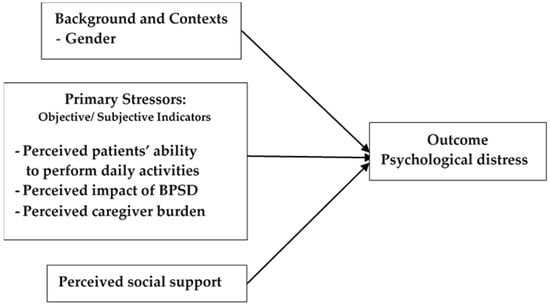
Figure 1
Open AccessArticle
A Preliminary Study of Intravaginal Lactic Acid Gel (Canesbalance®) for Post-Episiotomy Healing: A Randomized Clinical Trial
by
Dragos Brezeanu, Ana-Maria Brezeanu, Sergiu Ioachim Chirila and Vlad Tica
Healthcare 2025, 13(13), 1581; https://doi.org/10.3390/healthcare13131581 - 1 Jul 2025
Abstract
►▼
Show Figures
Background: Episiotomy-related morbidity remains a substantial challenge in postpartum recovery, often affecting maternal quality of life. Given the crucial role of local microbiota and wound environment in perineal healing, intravaginal lactic acid gel emerges as a promising adjunctive therapy. Objective: To evaluate the
[...] Read more.
Background: Episiotomy-related morbidity remains a substantial challenge in postpartum recovery, often affecting maternal quality of life. Given the crucial role of local microbiota and wound environment in perineal healing, intravaginal lactic acid gel emerges as a promising adjunctive therapy. Objective: To evaluate the effectiveness and safety of intravaginal lactic acid gel (Canesbalance®, Bayer) in enhancing scar healing and reducing pain following mediolateral episiotomy. Methods: In this single-center randomized controlled trial, 100 postpartum women with mediolateral episiotomy were allocated to either a treatment group receiving intravaginal lactic acid gel (Canesbalance®, Bayer) or a standard care group. Scar healing was assessed at 7 and 40 days postpartum using POSAS, VAS, and NRS scores; hematological parameters were also monitored. Results: The lactic acid gel group demonstrated significantly greater reductions in scar severity and pain scores over time (p < 0.05), with no adverse hematological effects. Effect sizes (Cohen’s d) were moderate to high for scar healing (d = 0.76) and pain reduction (VAS: d = 0.83; NRS: d = 0.79), indicating clinical relevance beyond statistical significance. Conclusions: Intravaginal application of lactic acid gel may offer a safe and effective strategy to enhance perineal wound healing and pain relief after episiotomy. Further large-scale studies are warranted to validate these promising findings and explore underlying mechanisms.
Full article
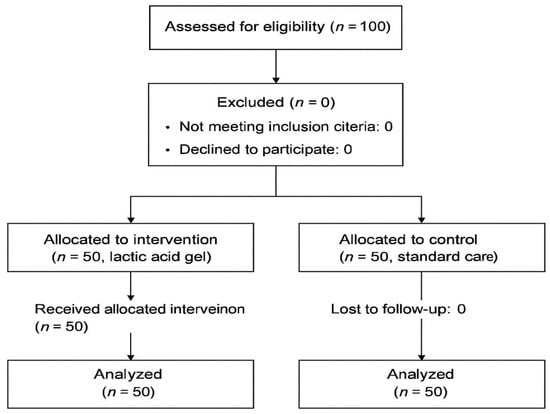
Figure 1
Open AccessReview
Assistive Technologies for Individuals with a Disability from a Neurological Condition: A Narrative Review on the Multimodal Integration
by
Mirjam Bonanno, Beatrice Saracino, Irene Ciancarelli, Giuseppe Panza, Alfredo Manuli, Giovanni Morone and Rocco Salvatore Calabrò
Healthcare 2025, 13(13), 1580; https://doi.org/10.3390/healthcare13131580 - 1 Jul 2025
Abstract
Background/Objectives: Neurological disorders often result in a broad spectrum of disabilities that impact mobility, communication, cognition, and sensory processing, leading to significant limitations in independence and quality of life. Assistive technologies (ATs) offer tools to compensate for these impairments, support daily living, and
[...] Read more.
Background/Objectives: Neurological disorders often result in a broad spectrum of disabilities that impact mobility, communication, cognition, and sensory processing, leading to significant limitations in independence and quality of life. Assistive technologies (ATs) offer tools to compensate for these impairments, support daily living, and improve quality of life. The World Health Organization encourages the adoption and diffusion of effective assistive technology (AT). This narrative review aims to explore the integration, benefits, and challenges of assistive technologies in individuals with neurological disabilities, focusing on their role across mobility, communication, cognitive, and sensory domains. Methods: A narrative approach was adopted by reviewing relevant studies published between 2014 and 2024. Literature was sourced from PubMed and Scopus using specific keyword combinations related to assistive technology and neurological disorders. Results: Findings highlight the potential of ATs, ranging from traditional aids to intelligent systems like brain–computer interfaces and AI-driven devices, to enhance autonomy, communication, and quality of life. However, significant barriers remain, including usability issues, training requirements, accessibility disparities, limited user involvement in design, and a low diffusion of a health technology assessment approach. Conclusions: Future directions emphasize the need for multidimensional, user-centered solutions that integrate personalization through machine learning and artificial intelligence to ensure long-term adoption and efficacy. For instance, combining brain–computer interfaces (BCIs) with virtual reality (VR) using machine learning algorithms could help monitor cognitive load in real time. Similarly, ATs driven by artificial intelligence technology could be useful to dynamically respond to users’ physiological and behavioral data to optimize support in daily tasks.
Full article
(This article belongs to the Special Issue Assistive Technologies, Robotics, and Automated Machines in the Health Domain: Third Edition)
►▼
Show Figures
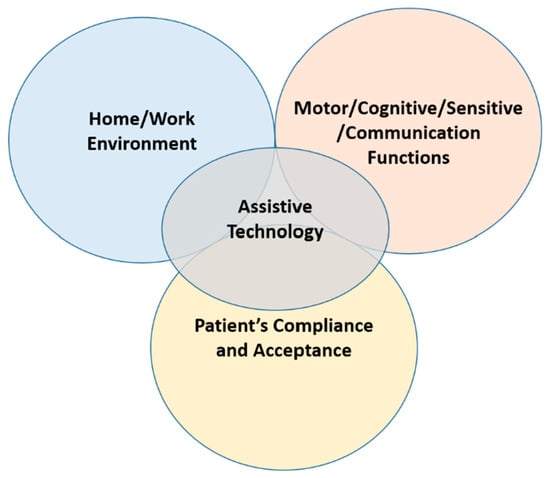
Figure 1
Open AccessArticle
Attention-Deficit/Hyperactivity Disorder as a Mediating Variable for Invalid Baseline Profiles on the ImPACT
by
Andre Petrossian, Louise A. Kelly, Rachel N. Casas, Jennifer M. Twyford, Michael A. McCrea, Thomas McAllister, Steven P. Broglio, Holly Benjamin, Thomas Buckley, Stefan Duma, Joshua Goldman, April Hoy, Jonathan Jackson, Thomas Kaminski, Christina Master, Christopher Miles, Nicholas Port and Adam Susmarski
Healthcare 2025, 13(13), 1579; https://doi.org/10.3390/healthcare13131579 - 1 Jul 2025
Abstract
Background: Individuals with ADHD may perform poorly on tasks targeting executive functioning skills such as the ImPACT, which requires the test-taker to employ judgement in non-routine situations Objective: To determine whether ADHD serves as a mediating variable for increasing the likelihood of an
[...] Read more.
Background: Individuals with ADHD may perform poorly on tasks targeting executive functioning skills such as the ImPACT, which requires the test-taker to employ judgement in non-routine situations Objective: To determine whether ADHD serves as a mediating variable for increasing the likelihood of an invalid score. Materials and Methods: A total of 39,140 collegiate athletes and United States military cadets consented to the Concussion Assessment, Research, and Education (CARE) Consortium study. Participants completed the CARE Baseline Packet which included various sections through which study participants provide self-report data, including demographic, personal, and family history sections. The personal history portion of the CARE Baseline Packet addressed the participant’s neurological history, including self-reported diagnosis of ADHD and history of traumatic brain injury. Variables utilized for the current study included age, gender, race, ethnicity, the participant’s primary college sport, use of mouthguards for athletes competing in sports requiring them, and the presence of an ADHD diagnosis. Participants responded to a question, inquiring if they had ever been diagnosed by a medical professional with ADHD, ultimately producing a dichotomous yes/no response. Results: We found that participants with ADHD were more likely to produce invalid baseline scores (ß = −0.884; p < 0.001). Similar results were found when controlling for sex, race, age, sport played, mouthguard use, and number of previous concussions (ß = −0.786; p < 0.001). Sex, race, sport played, and mouthguard use each played a significant role in determining profile validity, independent of ADHD diagnosis. With ADHD removed from the model, age negatively affected the likelihood of a valid score (ß = −0.052; p = 0.048). Conclusions: Our study suggests that the relationship between age and ImPACT validity is explained by the presence of ADHD. Results support adjusting ImPACT’s validity thresholds for individuals with ADHD.
Full article
Open AccessReview
Guidelines for Recommended Footwear for Healthy Children and Adolescents: A Rapid Scoping Review to Characterise the Nature and Extent of Footwear Research and Clinical Policy Guidelines
by
Liam Hughes, Mark I. Johnson, Nic Perrem and Peter Francis
Healthcare 2025, 13(13), 1578; https://doi.org/10.3390/healthcare13131578 (registering DOI) - 1 Jul 2025
Abstract
Background/Objectives: Clinical guidelines for children’s footwear vary widely across governmental and clinical sources, reflecting inconsistencies in best practices for paediatric foot health. These discrepancies arise from differing research interpretations, regional priorities, and clinical expertise. This scoping review evaluates existing guidelines and examines
[...] Read more.
Background/Objectives: Clinical guidelines for children’s footwear vary widely across governmental and clinical sources, reflecting inconsistencies in best practices for paediatric foot health. These discrepancies arise from differing research interpretations, regional priorities, and clinical expertise. This scoping review evaluates existing guidelines and examines the evidence supporting them. The objective of this scoping review was to identify and map existing footwear guidelines for healthy children and adolescents across governmental, professional, and clinical sources, and to evaluate the type and strength of evidence underpinning these recommendations. Methods: A systematic search of PubMed, Google Scholar, ScienceDirect, and governmental databases was conducted. Studies on footwear recommendations for healthy children aged 18 months to 18 years were included. Articles published between 1970 and 2024 were considered, as 1970 marked the first mass marketing of running shoes/trainers. Results: Footwear guidelines lack standardisation, with variations in definitions, recommendations, and supporting evidence. Key inconsistencies exist in parameters such as fit, flexibility, and toe allowance, with most recommendations based on expert opinion rather than empirical data. Discrepancies in commercial footwear sizing further complicate proper fit assessment. Conclusions: This is the first comprehensive review of children’s footwear guidelines, integrating governmental, professional body, and clinical recommendations. While there is consensus on the importance of properly fitting shoes, the literature reveals inconsistencies and reliance on expert opinion rather than high-quality research. This review highlights the need for standardised, evidence-based criteria to guide footwear recommendations and serves as a foundation for future research aimed at bridging the gap between research and practice.
Full article
(This article belongs to the Special Issue Understanding Foot Health: An Evolutionary Perspective)
►▼
Show Figures
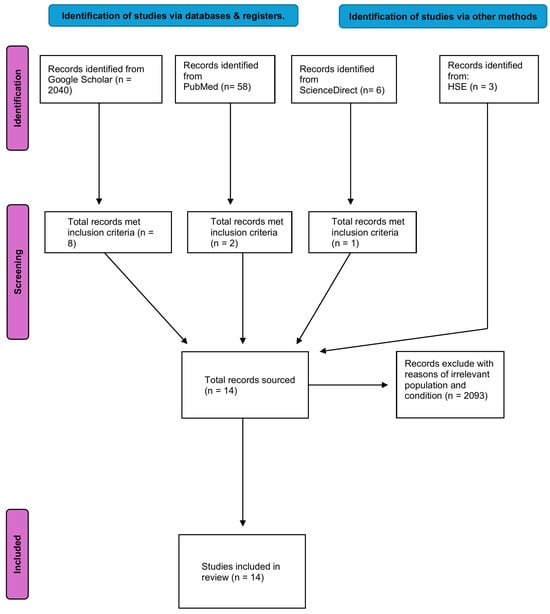
Figure 1
Open AccessArticle
Evaluating Non-Invasive Computer Vision-Based Quantification of Neonatal Movement as a Marker of Development in Preterm Infants: A Pilot Study
by
Janet Pigueiras-del-Real, Lionel C. Gontard, Isabel Benavente-Fernández, Syed Taimoor Hussain, Syed Adil Hussain, Simón P. Lubián-López and Angel Ruiz-Zafra
Healthcare 2025, 13(13), 1577; https://doi.org/10.3390/healthcare13131577 - 1 Jul 2025
Abstract
Background: Traditional neonatal assessments rely on anthropometric measures such as weight, body size, and head circumference. However, recent studies suggest that objective movement quantification may serve as a complementary clinical indicator of development in preterm infants. Methods: This study evaluates non-invasive
[...] Read more.
Background: Traditional neonatal assessments rely on anthropometric measures such as weight, body size, and head circumference. However, recent studies suggest that objective movement quantification may serve as a complementary clinical indicator of development in preterm infants. Methods: This study evaluates non-invasive computer vision-based quantification of neonatal movement using contactless pose tracking based on computer vision. We analyzed approximately 800,000 postural data points from ten preterm infants to identify reliable algorithms, optimal recording duration, and whether whole-body or regional tracking is sufficient. Results: Our findings show that 30 s video segments are adequate for consistent motion quantification. Optical flow methods produced inconsistent results, while distance-based algorithms—particularly Chebyshev and Minkowski—offered greater stability, with coefficients of variation of 5.46% and 6.40% in whole-body analysis. Additionally, Minkowski and Mahalanobis metrics applied to the lower body yielded results similar to full-body tracking, with minimal differences of 0.89% and 1%. Conclusions: The results demonstrate that neonatal movement can be quantified objectively and without physical contact using computer vision techniques and reliable computational methods. This approach may serve as a complementary clinical indicator of neonatal progression, alongside conventional measures such as weight and size, with applications in continuous monitoring and early clinical decision-making for preterm infants.
Full article
(This article belongs to the Section Perinatal and Neonatal Medicine)
►▼
Show Figures
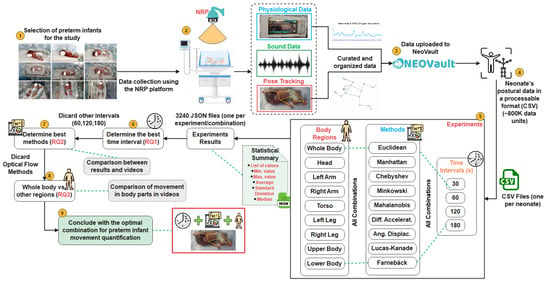
Figure 1
Open AccessArticle
The Practices of Portuguese Primary Health Care Professionals in Palliative Care Access and Referral: A Focus Group Study
by
Camila Barreto, Marcelle Miranda da Silva, Ana Fátima Carvalho Fernandes, Romel Jonathan Velasco Yanez and Carlos Laranjeira
Healthcare 2025, 13(13), 1576; https://doi.org/10.3390/healthcare13131576 - 1 Jul 2025
Abstract
Background/Objectives: The prevalence of people with incurable and progressive diseases in primary health care is high. Family doctors and nurses must be active agents in the early identification of palliative needs and the implementation of palliative approaches in cases of low to
[...] Read more.
Background/Objectives: The prevalence of people with incurable and progressive diseases in primary health care is high. Family doctors and nurses must be active agents in the early identification of palliative needs and the implementation of palliative approaches in cases of low to intermediate complexity. While there is a need for early referral of more complex palliative care (PC) cases to specialized teams, primary health care (PHC) professionals lack the confidence or skill to describe their role. This study sought to explore and describe (a) the practices of PHC professionals regarding their PC provision; (b) the barriers regarding access and referral of patients to specialized PC services; and (c) the strategies used or recommended to mitigate difficulties in accessing and referring to specialized PC. Methods: A descriptive qualitative study was carried out, using five focus groups conducted with nursing and medical staff at three local health units in the central region of Portugal. Semi-structured interviews were conducted, and then recorded, transcribed, and analyzed through a thematic analysis approach. The reporting of this research follows the COREQ checklist. Results: In total, 34 PHC professionals participated in this study. The majority of participants were women (n = 26) and family doctors (n = 24). Their mean age was 43.8 ± 11.9 (range: 29 to 65 years). The findings were organized into three core themes: (1) the contours of palliative action developed by PHC teams; (2) barriers to access and safe transition between PHC and specialized PC; and (3) ways to mitigate difficulties in accessing and referring to specialized PC. Conclusions: Our findings highlight the fundamental role of PHC professionals in providing primary PC, and in identifying PC needs and referring patients to PC early on, while exposing the systemic and interpersonal challenges that hinder these processes. To overcome these challenges, it is essential to invest in the development of integrated care models that promote practical, low-bureaucratic referral processes and capture the human resources necessary for the adequate follow-up of users.
Full article
(This article belongs to the Special Issue New Advances in Palliative Care)
►▼
Show Figures
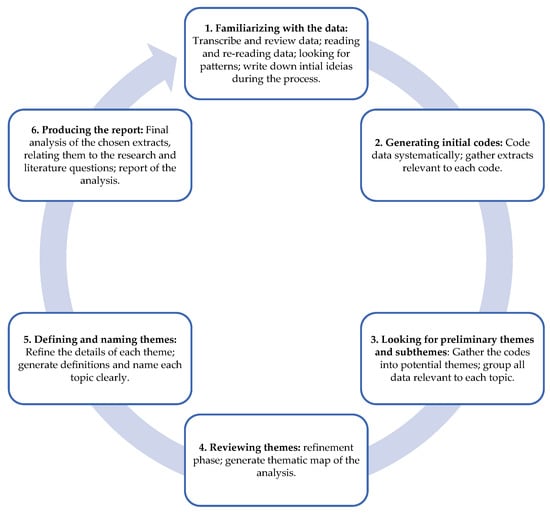
Figure 1
Open AccessArticle
Difficulties in Emotion Regulation and Stress in Intensive Care Unit Nurses During COVID-19: Exploring the Mediating Role of Psychological Inflexibility and the Moderating Effect of Work Experience
by
Cristian Di Gesto, Giulia Rosa Policardo, Sara Bocci Benucci, Eriada Çela and Caterina Grano
Healthcare 2025, 13(13), 1575; https://doi.org/10.3390/healthcare13131575 - 1 Jul 2025
Abstract
Background/Objectives: The COVID-19 pandemic has placed intensive care unit (ICU) nurses under intense psychological pressure, increasing emotional and psychological stress. Two constructs—difficulties in emotion regulation and psychological inflexibility (i.e., low contact with the present moment and a lack of committed action based on
[...] Read more.
Background/Objectives: The COVID-19 pandemic has placed intensive care unit (ICU) nurses under intense psychological pressure, increasing emotional and psychological stress. Two constructs—difficulties in emotion regulation and psychological inflexibility (i.e., low contact with the present moment and a lack of committed action based on personal values)—have been associated with increased perceived stress levels but remain underexplored in this population. Aims: This study investigated whether psychological inflexibility mediates the relationship between emotion regulation difficulties and perceived stress in ICU nurses. It also examined whether years of ICU work experience moderate the direct relationship between emotion regulation difficulties and perceived stress. Methods: A cross-sectional study was conducted with 210 ICU nurses (65.2% women; 34.8% men; mean age = 40.25 years ± 11.36) from Italian public hospitals. The participants completed the Difficulties in Emotion Regulation Scale, the Acceptance and Action Questionnaire-II, and the Perceived Stress Scale. A moderated mediation model was tested to examine whether psychological inflexibility mediates the relationship between emotion regulation difficulties and perceived stress and whether years of ICU work experience moderate the path between these variables. Results: Higher difficulties in emotion regulation predicted greater psychological inflexibility, which, in turn, predicted higher perceived stress. Psychological inflexibility fully mediated the relationship between emotion regulation difficulties and perceived stress. Additionally, years of ICU work experience significantly moderated the direct link between emotion regulation difficulties and perceived stress. This relationship was strongest for nurses with 1–15 years of ICU experience. The model explained 33% of the variance in perceived stress. Conclusions: This study highlights the importance of the novel construct of psychological inflexibility in the context of healthcare professionals and its role in shaping perceived stress. Addressing psychological inflexibility through targeted interventions may help mitigate stress and promote well-being among ICU nurses.
Full article
(This article belongs to the Special Issue The Impact of COVID-19 on Mental Health Across Diverse Populations)
►▼
Show Figures
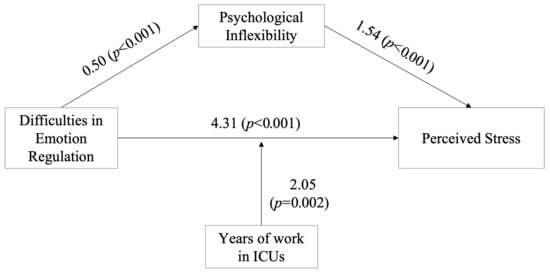
Figure 1
Open AccessArticle
Workplace Gaslighting Is Associated with Nurses’ Job Burnout and Turnover Intention in Greece
by
Ioannis Moisoglou, Aglaia Katsiroumpa, Olympia Konstantakopoulou, Ioanna V. Papathanasiou, Aggeliki Katsapi, Ioanna Prasini, Maria Chatzi and Petros Galanis
Healthcare 2025, 13(13), 1574; https://doi.org/10.3390/healthcare13131574 - 1 Jul 2025
Abstract
Νurses often experience abusive behavior, such as gaslighting, which has a negative impact on their mental health and leads them to quit their jobs. Background/Objectives: We evaluate the impact of workplace gaslighting on nurses’ job burnout and turnover intention. Methods: We
[...] Read more.
Νurses often experience abusive behavior, such as gaslighting, which has a negative impact on their mental health and leads them to quit their jobs. Background/Objectives: We evaluate the impact of workplace gaslighting on nurses’ job burnout and turnover intention. Methods: We conducted a cross-sectional study with a convenience sample of 410 nurses in Greece. We used the Gaslighting at Work Scale (GWS) to measure levels of workplace gaslighting in our sample. Also, we used the single-item burnout measure to measure job burnout and a six-point Likert scale to measure turnover intention. We constructed multivariable regression models to estimate the independent effect of workplace gaslighting on job burnout and turnover intention. Results: We found positive correlations between GWS and job burnout (r = 0.298, p-value < 0.01) and turnover intention (r = 0.385, p-value < 0.01). We found that workplace gaslighting was associated with job burnout in our sample. Our multivariable linear regression model identified a positive association between the score on the GWS (adjusted b = 0.653, 95% CI = 0.436 to 0.869, p < 0.001) and burnout. Similarly, we found that a higher score on the GWS was associated with a higher turnover intention (adjusted b = 0.616, 95% CI = 0.466 to 0.765, p < 0.001). Conclusions: This study findings indicate that nurses encounter gaslighting behaviors that adversely impact their job burnout and turnover intentions. Healthcare institutions are urged to implement policies that raise awareness about this conduct, facilitate avenues for staff to report it, and exhibit zero tolerance for abusive behaviors, including gaslighting.
Full article
(This article belongs to the Special Issue Healthcare Management: Improving Patient Outcomes and Service Quality)
Open AccessProtocol
Protocol for a Trial to Assess the Efficacy and Applicability of Isometric Strength Training in Older Adults with Sarcopenia and Dynapenia
by
Iker López, Juan Mielgo-Ayuso, Juan Ramón Fernández-López, Jose M. Aznar and Arkaitz Castañeda-Babarro
Healthcare 2025, 13(13), 1573; https://doi.org/10.3390/healthcare13131573 - 1 Jul 2025
Abstract
►▼
Show Figures
Background: Sarcopenia (loss of muscle mass) and dynapenia (loss of strength) are prevalent in older adults aged 70 years and over. Both have an impact on their functional ability and quality of life, with type II muscle fibres being particularly affected. Although traditional
[...] Read more.
Background: Sarcopenia (loss of muscle mass) and dynapenia (loss of strength) are prevalent in older adults aged 70 years and over. Both have an impact on their functional ability and quality of life, with type II muscle fibres being particularly affected. Although traditional resistance training (TRT) is effective, it presents technical difficulties and an increased risk of injury among this vulnerable population. Isometric strength training (IST) is a potentially safer, more accessible and more effective alternative. Objective: To describe the protocol of a single-arm, pre-post intervention trial designed to evaluate the efficacy and applicability of a 16-week IST programme on muscle strength, skeletal muscle mass, quality of life and applicability (safety, acceptability, perceived difficulty) in 18 older adults aged 70 years and above with a diagnosis of sarcopenia and dynapenia. The influence of genetic and environmental factors on the variability of response to IST will also be explored. Methodology: The participants, who have all been diagnosed with sarcopenia according to EWGSOP2 (European Working Group on Sarcopenia in Older People 2) criteria, will perform two IST sessions per week for 16 weeks. Each 30-min session will consist of one progressive set (total duration 45 s to 90 s) for each of the eight major muscle groups. This series will include phases at 20% and 40% of individual Maximal Voluntary Isometric Contraction (MVIC), culminating in 100% Maximal Effort (ME), using the CIEX SYSTEM machine with visual feedback. The primary outcome variables will be: change in knee extensor MVIC and change in Appendicular Skeletal Muscle Mass Index (ASMMI). Secondary variables will be measured (other components of sarcopenia, quality of life by EQ-5D-5L, use of Likert scales, posture and physiological variables), and saliva samples will be collected for exploratory genetic analyses. The main statistical analyses will be performed with t-tests for related samples or their non-parametric analogues. Discussion: This protocol details a specific IST intervention and a comprehensive evaluation plan. The results are expected to provide evidence on the feasibility and effects of IST among older adults with sarcopenia and dynapenia. Understanding individual variability in response, including genetic influence, could inform the design of more personalised and effective exercise strategies for this population in the future.
Full article
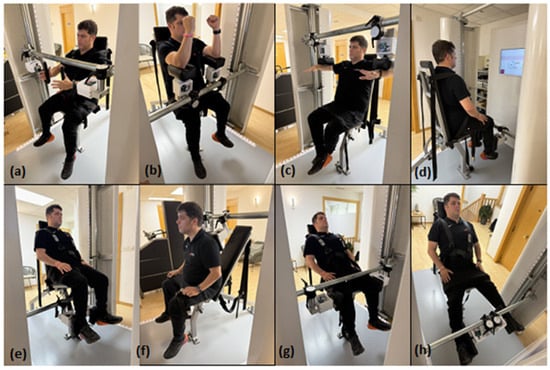
Figure 1
Open AccessReview
Mental Health Impacts of the COVID-19 Pandemic on College Students: A Literature Review with Emphasis on Vulnerable and Minority Populations
by
Anna-Koralia Sakaretsanou, Maria Bakola, Taxiarchoula Chatzeli, Georgios Charalambous and Eleni Jelastopulu
Healthcare 2025, 13(13), 1572; https://doi.org/10.3390/healthcare13131572 - 30 Jun 2025
Abstract
The COVID-19 pandemic significantly disrupted higher education worldwide, imposing strict isolation measures, transitioning learning online, and exacerbating existing social and economic inequalities. This literature review examines the pandemic’s impact on the mental health of college students, with a focus on those belonging to
[...] Read more.
The COVID-19 pandemic significantly disrupted higher education worldwide, imposing strict isolation measures, transitioning learning online, and exacerbating existing social and economic inequalities. This literature review examines the pandemic’s impact on the mental health of college students, with a focus on those belonging to minority groups, including racial, ethnic, migrant, gender, sexuality-based, and low-income populations. While elevated levels of anxiety, depression, and loneliness were observed across all students, findings indicate that LGBTQ+ and low-income students faced the highest levels of psychological distress, due to compounded stressors such as family rejection, unsafe home environments, and financial insecurity. Racial and ethnic minority students reported increased experiences of discrimination and reduced access to culturally competent mental healthcare. International and migrant students were disproportionately affected by travel restrictions, legal uncertainties, and social disconnection. These disparities underscore the need for higher education institutions to implement targeted, inclusive mental health policies that account for the unique needs of at-risk student populations during health crises.
Full article
(This article belongs to the Special Issue Performance of Healthcare Systems During and After the COVID-19 Pandemic)
►▼
Show Figures
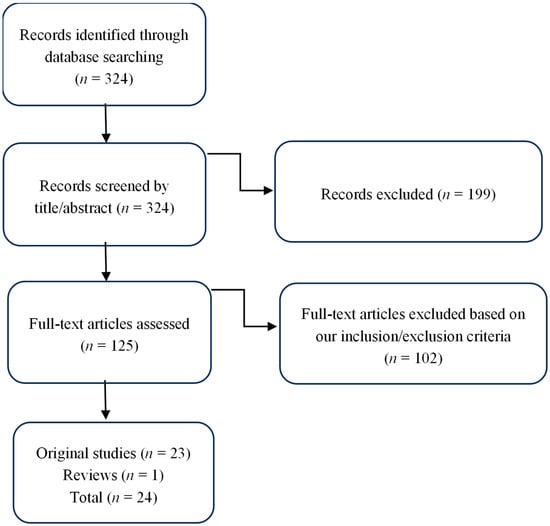
Figure 1
Open AccessSystematic Review
Disaster Preparedness and Response Among Healthcare Professionals During the Hajj: A Systematic Literature Review
by
Thawab Alrabie, Michael Brown, Billiejoan Rice and Lynne Marsh
Healthcare 2025, 13(13), 1571; https://doi.org/10.3390/healthcare13131571 - 30 Jun 2025
Abstract
►▼
Show Figures
Background: Disasters pose significant challenges to public health by disrupting essential services, especially during mass gatherings such as the Hajj pilgrimage. These complex events demand swifts coordinated action from healthcare professionals. However, many remain insufficiently equipped for large-scale emergencies due to gaps
[...] Read more.
Background: Disasters pose significant challenges to public health by disrupting essential services, especially during mass gatherings such as the Hajj pilgrimage. These complex events demand swifts coordinated action from healthcare professionals. However, many remain insufficiently equipped for large-scale emergencies due to gaps in triage training, disaster knowledge, and established response protocols—issues that are particularly critical in high-risk settings. Aim: This systematic literature review aims to explore the clinical insights of registered nurses and other healthcare professionals in disaster preparedness and response during the Hajj pilgrimage in Saudi Arabia. Methods: A systematic literature review was conducted following PRISMA guidelines. A comprehensive database search was performed across CINAHL, Scopus, Medline, Embase, and APA PsycINFO, focusing on studies published between 2012 and 2025. Eligible studies addressed disaster nursing education, preparedness, and response. The Mixed Methods Appraisal Tool (MMAT) was used for quality assessment. Results: Twenty-three studies met the inclusion criteria. Three main themes emerged: disaster preparedness, experiences and challenges in disaster response, and education and training. The review revealed lack in nurses’ readiness, policy awareness, and real-world disaster experience. Training and curriculum improvements are essential to enhance disaster response capabilities. Conclusions: This review highlights the urgent need for standardized disaster nursing curricula to enhance preparedness and response competencies. Incorporating structured disaster training into nursing education will strengthen healthcare system resilience. Future research should adopt qualitative methods to capture healthcare professionals lived experiences during the Hajj. Including diverse participants and focusing on the unique cultural context can enhance disaster preparedness and response strategies.
Full article
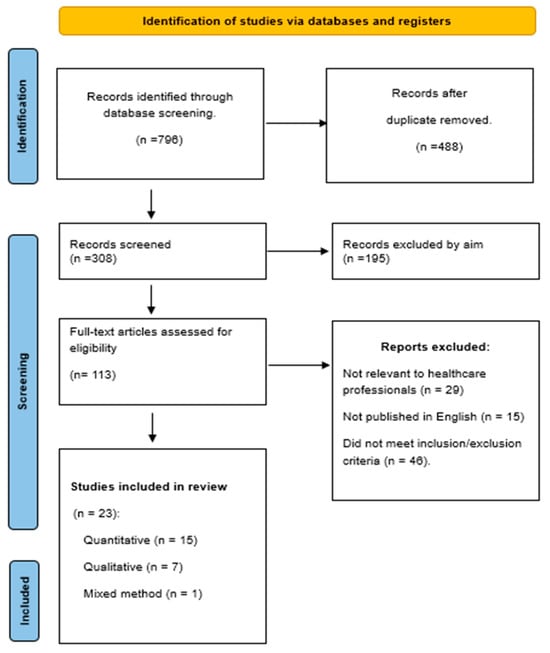
Figure 1
Open AccessArticle
Social Capital in Care for Complex Patients: A Pilot Study to Develop an Instrument for Measuring the Impact of Social Capital in Healthcare in Croatia
by
Maja Banadinović, Marko Marelić, Dorja Vočanec and Aleksandar Džakula
Healthcare 2025, 13(13), 1570; https://doi.org/10.3390/healthcare13131570 - 30 Jun 2025
Abstract
Background: The increasing complexity of patient care demands coordinated and integrated approaches involving multiple health and social care professionals. Social capital among professionals plays a critical role in facilitating effective collaboration and continuity of care for complex patients. Objectives: This pilot study aimed
[...] Read more.
Background: The increasing complexity of patient care demands coordinated and integrated approaches involving multiple health and social care professionals. Social capital among professionals plays a critical role in facilitating effective collaboration and continuity of care for complex patients. Objectives: This pilot study aimed to develop and test an instrument based on the position generator method to measure perceived, potential, and activated social capital for patients within professional networks involved in complex patient care in Croatia. Methods: The instrument enabled differentiation between the existence of professional connections and their actual mobilization for patient benefit. This multidimensional approach, including activation levels for patient needs, marks a key improvement over earlier measures. Results: Results indicated that while professionals possess broad networks, the activation of these networks for patient care remains limited. Accumulated work experience is positively associated with greater activation of social capital, whereas formal changes in the work environment showed no significant impact. Conclusions: Despite sample limitations restricting generalizability, the instrument demonstrated sensitivity and applicability for mapping professional networks in healthcare settings. This study lays the groundwork for further research with larger samples to validate the instrument and support the development of coordinated care systems leveraging social capital for improved outcomes in complex patient care.
Full article
(This article belongs to the Section Health Policy)
►▼
Show Figures
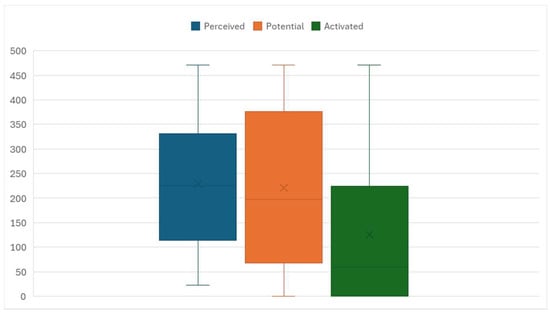
Figure 1
Open AccessArticle
Social Support and Manifest Anxiety as Predictors of Somatic and Cognitive Anxiety Symptoms in Children with Lower Leg and Ankle Fractures: A Cross-Sectional Study
by
Goranka Radmilović, Marija Trconić, Martina Kolak Jurić, Marin Mamić, Ivan Vukoja and Dalibor Divković
Healthcare 2025, 13(13), 1569; https://doi.org/10.3390/healthcare13131569 - 30 Jun 2025
Abstract
Background: Despite the high incidence of surgical treatment of lower leg fractures in children, there is little research focusing on the emotional consequences of such trauma, particularly the distinction between somatic and cognitive anxiety symptoms. Given the important role of social support and
[...] Read more.
Background: Despite the high incidence of surgical treatment of lower leg fractures in children, there is little research focusing on the emotional consequences of such trauma, particularly the distinction between somatic and cognitive anxiety symptoms. Given the important role of social support and manifest anxiety in emotional recovery, there is a clear need to investigate factors that predict the development of anxiety in this population. Objectives: This study aimed to identify predictors of anxiety and to assess differences between somatic and cognitive anxiety symptoms in children undergoing surgery for lower leg fractures, addressing the need to better understand psychological effects in this vulnerable group. Methods: The research included 63 children with lower leg fractures, of whom 40 were boys (63.5%) and 23 were girls (36.5%), with a mean age of M = 15.174 (SD = 3.701). The instruments used in this research were as follows: the Demographic Data Questionnaire, the Children’s Anxiety Scale, the Beck Anxiety Inventory (BAI), and the Multidimensional Scale of Perceived Social Support. Results: The results showed that the only significant predictor of somatic symptoms of anxiety was the presence of paresthesia, while significant predictors of cognitive symptoms of anxiety were social support from friends and the presence of paresthesia. Conclusions: Paresthesia was identified as a significant predictor of somatic symptoms of anxiety, while social support from friends was associated with lower levels of cognitive anxiety symptoms in children with lower leg and ankle fractures. These results point to the relevance of considering both somatic and psychological factors in the recovery process following pediatric fractures.
Full article
Open AccessArticle
Long COVID Patients’ Perceptions of Social Support in Their Work and Personal Lives: A Qualitative Study
by
Willi L. Tarver, Xiaodan Hu, Sarah R. MacEwan, Alice A. Gaughan and Ann Scheck McAlearney
Healthcare 2025, 13(13), 1568; https://doi.org/10.3390/healthcare13131568 - 30 Jun 2025
Abstract
Background: The onset and persistence of Long COVID can lead to cognitive and functional impairment, contributing to illness-induced employment and work disparities. Understanding how social support influences these issues can inform care strategies and support continued workforce participation. Objectives: This study explored
[...] Read more.
Background: The onset and persistence of Long COVID can lead to cognitive and functional impairment, contributing to illness-induced employment and work disparities. Understanding how social support influences these issues can inform care strategies and support continued workforce participation. Objectives: This study explored perceptions of social support among patients with Long COVID. Methods: Semi-structured interviews were conducted with 21 patients receiving care at a post-COVID recovery clinic. Patient perspectives on social support in their work and personal lives were analyzed using both inductive and deductive thematic analysis. Findings were organized under the following five dimensions of social support theory: tangible support, emotional support, informational support, appraisal support, and belonging support. Results: Patients received positive tangible, emotional, and informational support from family, friends, and credible sources. However, patients also described receiving negative appraisal support from their personal lives and workplaces when others misunderstood the scope and duration of their limitations due to Long COVID. This negative appraisal support often labeled them as lazy or underperforming, leading to both personal and professional challenges to their self-esteem. Regarding companionship support, participants reported challenges keeping in touch with others and being less social. Conclusions: Social support impacts Long COVID patients’ abilities to cope with the trauma of their experiences. Understanding the sources of and barriers to social support for Long COVID patients may inform strategies to enhance their care and well-being. Future interventions should offer opportunities for family, friends, and employers of Long COVID patients to learn about what it means to live with the illness.
Full article
(This article belongs to the Special Issue Improving the Health and Well-Being of Groups of Workers Experiencing Work Disparities)
Open AccessArticle
Current Unveiling Key Research Trends in Endometrial Cancer: A Comprehensive Topic Modeling Analysis
by
Sujin Kang and Youngji Kim
Healthcare 2025, 13(13), 1567; https://doi.org/10.3390/healthcare13131567 - 30 Jun 2025
Abstract
►▼
Show Figures
Background/Objectives: Endometrial cancer (EC) is the sixth most common cancer among women worldwide, and its global incidence has significantly increased over the past three decades. Despite its substantial burden, comprehensive reviews of EC-related research remain limited. This study employs topic modeling to analyze
[...] Read more.
Background/Objectives: Endometrial cancer (EC) is the sixth most common cancer among women worldwide, and its global incidence has significantly increased over the past three decades. Despite its substantial burden, comprehensive reviews of EC-related research remain limited. This study employs topic modeling to analyze and classify recent research trends in EC. Methods: We identified studies related to endometrial carcinoma published between 2019 and 2023 in PubMed, Web of Science, and the Cochrane Library. The search was conducted using the following terms: endometr* AND (neoplasm* OR cancer* OR carcinoma*) NOT endometriosis. Word clouds were constructed and topic modeling was performed to analyze research activity. Results: A total of 2188 studies were selected, and 11,552 terms were extracted. High-frequency and TF-IDF-weighted keywords included ‘cancer’, ‘risk’, ‘survival’, ‘stage’, ‘tumor’, ‘surgery’, and ‘OS.’ Topic modeling analysis identified ten clusters, categorized as follows: ‘Gynecologic cancer’, ‘Surgical staging’, ‘Therapeutic efficacy’, ‘Diagnosis’, ‘Surgical management’, ‘Multimodal treatment’, ‘Molecular treatment’, ‘Risk factors’, ‘Survival’, and ‘Hormonal regulation.’ Conclusions: This study highlights that recent research on EC has primarily focused on surgical decision making, outcome prediction, and patient survival. Future studies should place greater emphasis on multimodal treatment and prevention—particularly through the identification of risk factors—as well as on improving patients’ quality of life.
Full article
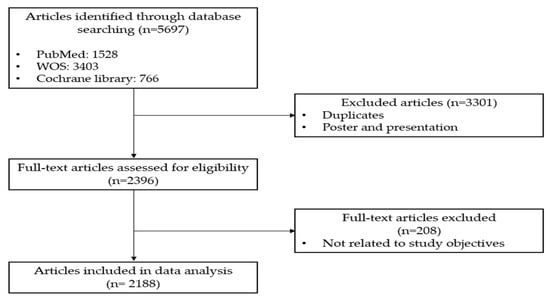
Figure 1
Open AccessArticle
Modification and Validation of the Chinese Short-Form Aging Perception Questionnaire: A Psychometric Analysis
by
Xinyi Liu, Wanhong Xiong, Dan Wang, Suting Song and Yu Luo
Healthcare 2025, 13(13), 1566; https://doi.org/10.3390/healthcare13131566 - 30 Jun 2025
Abstract
Background/Objectives: A reasonable assessment of the self-perception of aging (SPA) is of great significance to the health outcomes of older adults. This study aimed to develop the Modified Aging Perception Questionnaire (M-APQ) and to verify its psychometric properties. Methods: A multi-method
[...] Read more.
Background/Objectives: A reasonable assessment of the self-perception of aging (SPA) is of great significance to the health outcomes of older adults. This study aimed to develop the Modified Aging Perception Questionnaire (M-APQ) and to verify its psychometric properties. Methods: A multi-method study was conducted. In phase I, a qualitative study was conducted to supplement items to form the draft M-APQ. In phase II, three rounds of cognitive interviews were conducted to revise ambiguous items and form the prefinal M-APQ. In phase III, items were selected using Classical Test Theory (CTT) and Item Response Theory (IRT) to form the final M-APQ. In phase IV, the psychometric properties of the final version of M-APQ were validated. Results: Three items were added in Phase I. Six items were revised in Phase II. Eleven items were removed in phase III, leaving twenty-four items in the final version of M-APQ. In phase IV, the M-APQ showed good construct validity and convergent validity. The known-group validity analysis indicated significant differences in the M-APQ dimension scores on different self-rated health statuses. The Cronbach’s α for M-APQ and each dimension ranged from 0.798 to 0.888, and the intraclass correlation coefficients ranged from 0.704 to 0.883. The IRT analysis showed that item discrimination parameters ranged from 1.746 to 3.630, and difficulty parameters increased sequentially. Conclusions: The 24-item M-APQ includes seven dimensions and is a valid tool for assessing the self-perception of aging (SPA) among community-dwelling older adults.
Full article
(This article belongs to the Section Community Care)
►▼
Show Figures
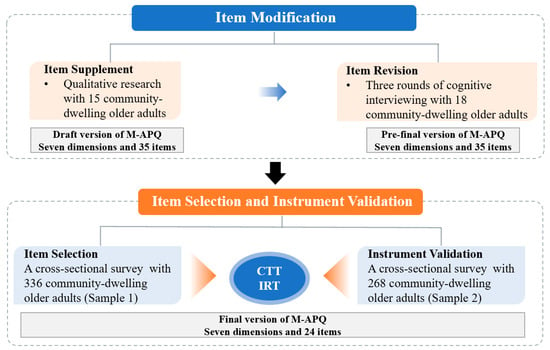
Figure 1
Open AccessArticle
Are Inflammatory Markers and Periodontitis Effective in Predicting Miscarriage?
by
Isa Temur, Selcen Ozcan Bulut, Safak Necati Dönertas, Aycan Dal Dönertas, Katibe Tugce Temur and Guldane Magat
Healthcare 2025, 13(13), 1565; https://doi.org/10.3390/healthcare13131565 - 30 Jun 2025
Abstract
►▼
Show Figures
Background/Objectives: Miscarriage is a common pregnancy complication that significantly impacts individuals’ health due to its physical and psychological effects. This study aimed to investigate the association between periodontal health and hematological parameters in women who experienced miscarriage before the 20th week of gestation,
[...] Read more.
Background/Objectives: Miscarriage is a common pregnancy complication that significantly impacts individuals’ health due to its physical and psychological effects. This study aimed to investigate the association between periodontal health and hematological parameters in women who experienced miscarriage before the 20th week of gestation, and to assess the potential predictive value of these parameters for miscarriage risk by comparing them with those of women with an uncomplicated pregnancy course. Methods: This study was a prospective case–control and cross-sectional study. It included a total of 82 participants, comprising 41 women with miscarriage and 41 healthy pregnant controls. The periodontal examinations included measurements of the Gingival Index (GI), Plaque Index (PI), Probing Depth (PD), Clinical Attachment Loss (CAL), and Simplified Calculus Index (SCI). Additionally, complete blood counts (CBCs) were obtained from all participants. Appropriate statistical analyses, including non-parametric, correlation, logistic regression, and ROC analyses, were conducted, with the significance level set at p < 0.05. Results: The primary outcome measure was CAL as an indicator of periodontal disease severity and its association with miscarriage risk. Additional outcomes included Plateletcrit (PCT), the Platelet Count (PLT), and the Neutrophil-to-Lymphocyte Ratio (NLR) to evaluate systemic inflammatory responses and their correlations with periodontal parameters. CAL was significantly elevated in the miscarriage group (p < 0.001) and emerged as the strongest predictor of miscarriage risk (OR = 0.0537, p < 0.001, AUC = 0.8691). PCT was significantly higher in the miscarriage group (p = 0.017) and positively correlated with the GI (p = 0.041), suggesting a link between systemic inflammation and periodontal health. Conclusions: Considering this study’s limitations, CAL was the strongest predictor of miscarriage, while PLT and PCT had some discriminative power. Collaboration between obstetricians and dentists can facilitate early diagnosis and intervention by promoting routine oral health check-ups before and during pregnancy. Additionally, integrating oral health assessments into prenatal care and developing public health policies could enhance access to dental services during both preconception and pregnancy periods.
Full article
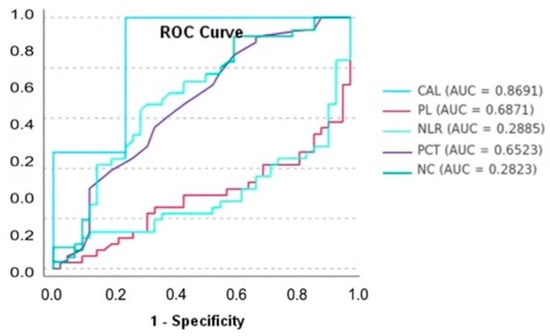
Figure 1

Journal Menu
► ▼ Journal Menu-
- Healthcare Home
- Aims & Scope
- Editorial Board
- Reviewer Board
- Topical Advisory Panel
- Instructions for Authors
- Special Issues
- Topics
- Sections & Collections
- Article Processing Charge
- Indexing & Archiving
- Editor’s Choice Articles
- Most Cited & Viewed
- Journal Statistics
- Journal History
- Journal Awards
- Society Collaborations
- Conferences
- Editorial Office
Journal Browser
► ▼ Journal BrowserHighly Accessed Articles
Latest Books
E-Mail Alert
News
Topics
Topic in
Cancers, Healthcare, JCM, JPM, Medicina
Public Health and Healthcare in the Context of Big Data
Topic Editors: Mingzhe Ma, Xi Yang, Ruogu QiDeadline: 5 July 2025
Topic in
Healthcare, JCM
The Use of New Technologies for Health and Clinical Practice
Topic Editors: Luca Marin, Matteo Vandoni, Vittoria CarnevaleDeadline: 25 July 2025
Topic in
Healthcare, IJERPH, JCM, Safety, Toxics
New Research in Work-Related Diseases, Safety and Health
Topic Editors: Alicja Bortkiewicz, Małgorzata KurpesaDeadline: 31 August 2025
Topic in
IJERPH, JPM, Healthcare, BDCC, Applied Sciences, Sensors
eHealth and mHealth: Challenges and Prospects, 2nd Edition
Topic Editors: Antonis Billis, Manuel Dominguez-Morales, Anton CivitDeadline: 31 October 2025

Conferences
Special Issues
Special Issue in
Healthcare
New Research on Psychosis in Older Adults
Guest Editors: Katarzyna Broczek, Tomasz Krzysztof SzafrańskiDeadline: 15 July 2025
Special Issue in
Healthcare
Sleep Disorders Management in Primary Care—Second Edition
Guest Editor: Izolde BouloukakiDeadline: 15 July 2025
Special Issue in
Healthcare
Digital Healthcare Innovation in Medical Imaging: The Past, the Present and the Future
Guest Editor: Barbara BrognaDeadline: 15 July 2025
Special Issue in
Healthcare
Advances in Manual Therapy: Diagnostics, Prevention and Treatment
Guest Editors: Adam Kawczyński, Rafal StudnickiDeadline: 30 July 2025
Topical Collections
Topical Collection in
Healthcare
Promoting Mental Health and Wellbeing in Chronic Illness Using Art
Collection Editors: Helen Noble, Claire Carswell
Topical Collection in
Healthcare
Why Some Patients Never Fully Recover: Post Active Phase of Infection Syndromes (PAPIS)
Collection Editors: Kenneth Friedman, Patricia A. Fennell, Evan Spivack, James Oleske, Nancy Klimas, Pawel Zalewski, Susan Levine
Topical Collection in
Healthcare
The Impact of COVID-19 on Healthcare Services
Collection Editors: Giuseppe Di Martino, Tommaso Staniscia, Fabrizio Cedrone
Topical Collection in
Healthcare
COVID-19: Impact on Public Health and Healthcare
Collection Editors: Manoj Sharma, Kavita Batra










